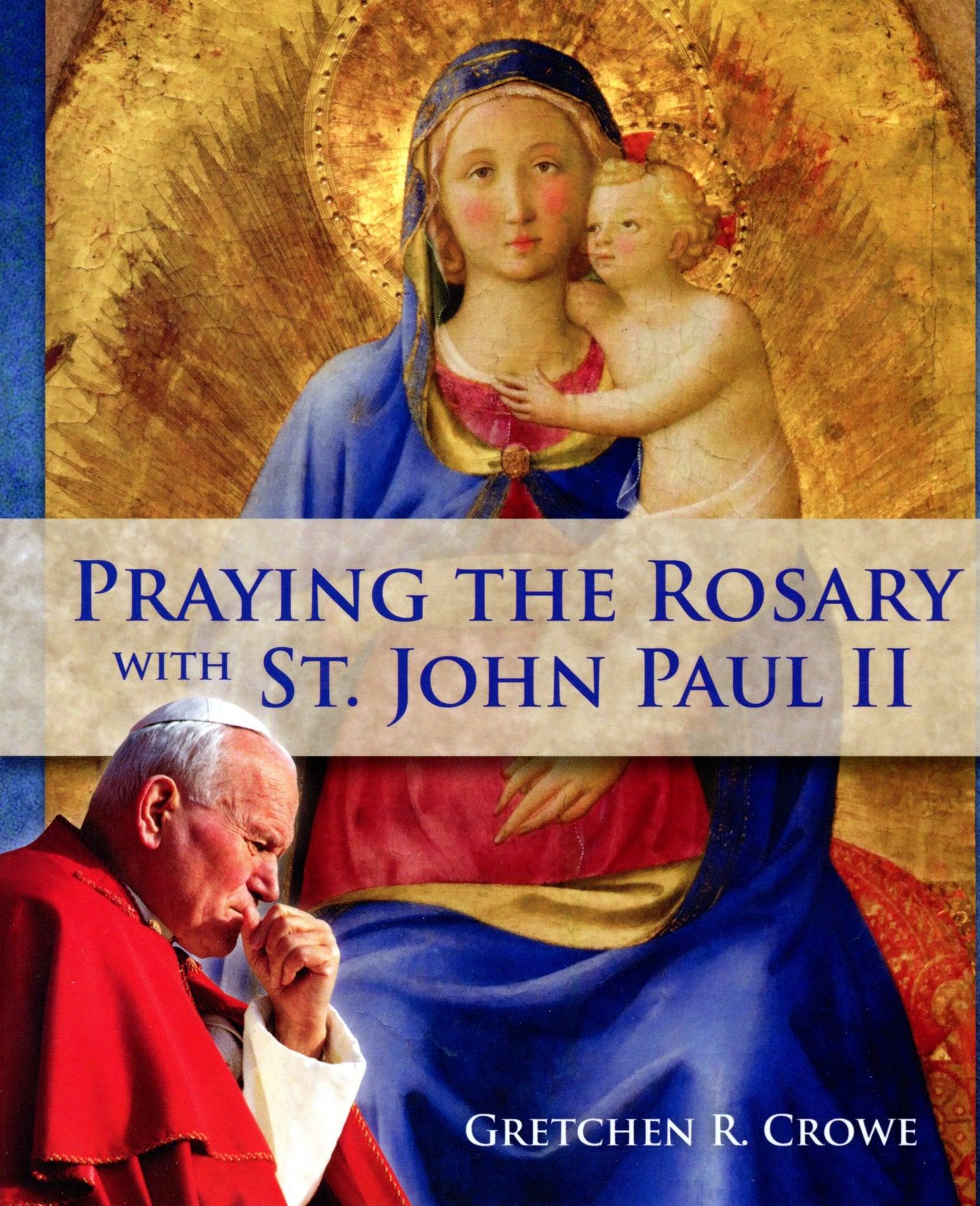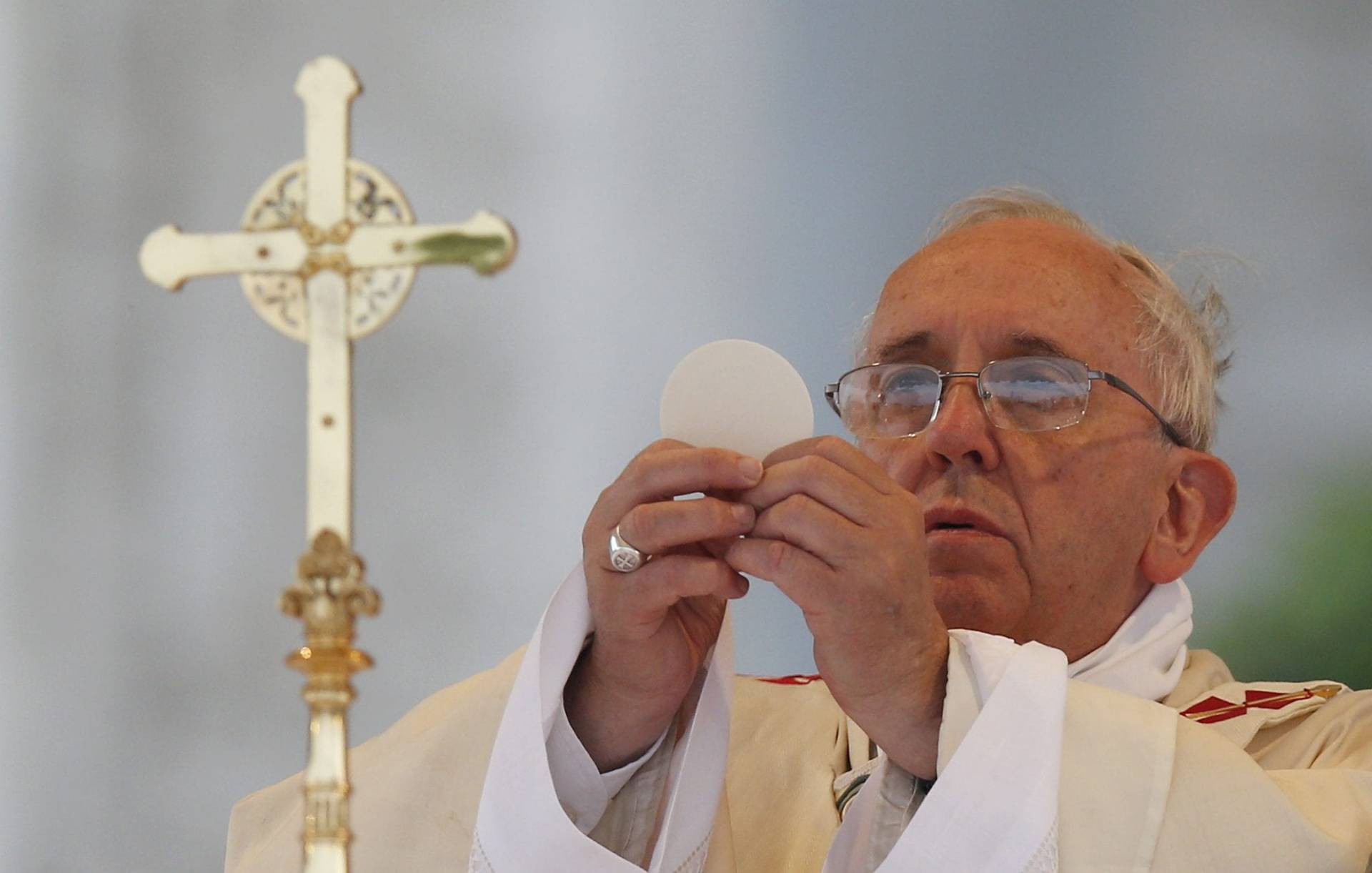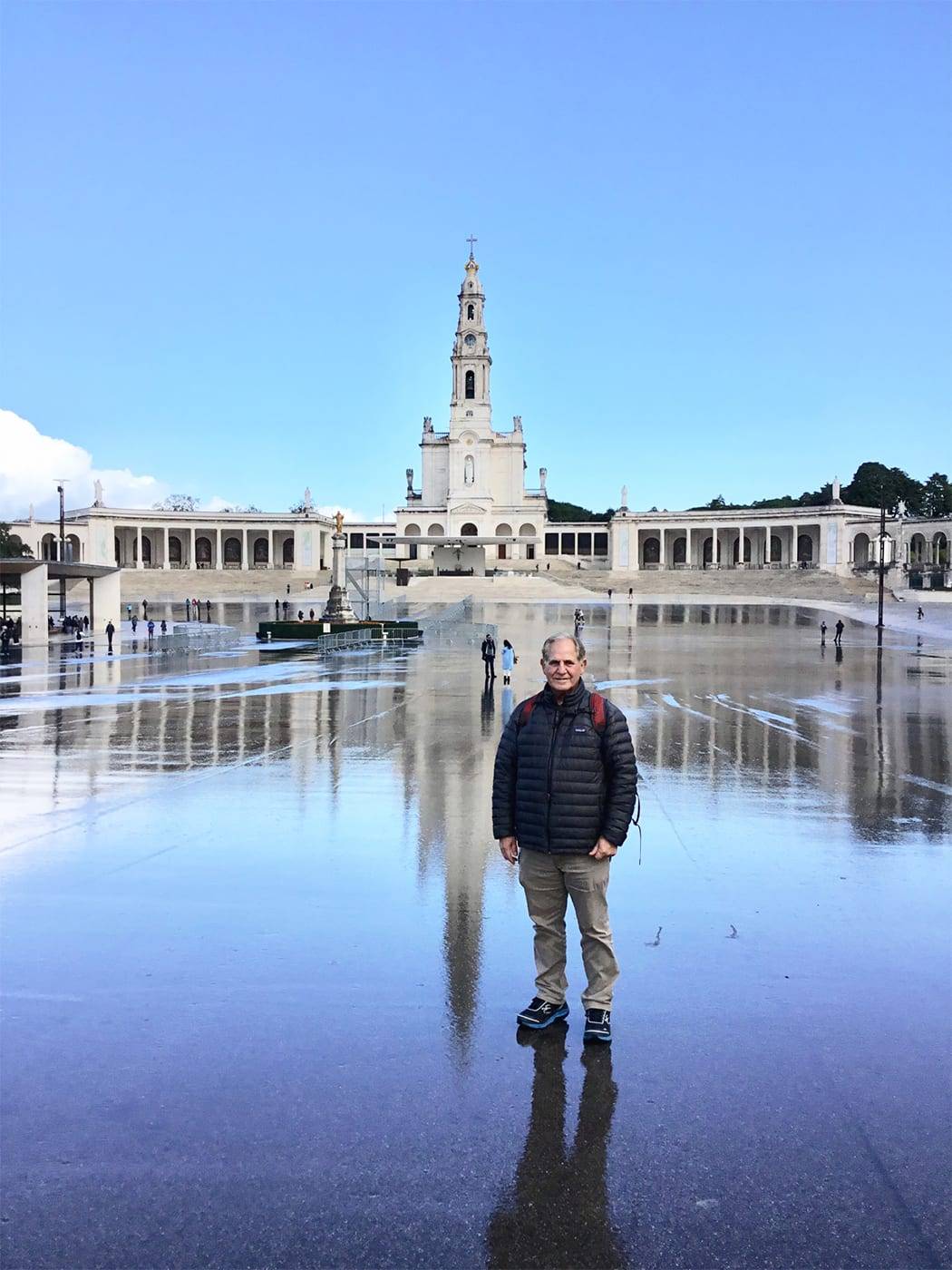ABUJA, Nigeria — In many ways, Nigeria is the Texas of Africa. It’s a loud, bold, swashbuckling land where “go big or go home” could be the national motto. With a population of 183 million, it’s the largest nation in Africa and also the largest economy, and is the continent’s largest producer of oil.
Even Nigeria’s defects, such as its legendary corruption, are larger than life. Despite producing 2.4 million barrels of crude oil every day, generating $50 billion in annual revenue, so much money is siphoned off that the country imports gasoline and its power grid is notoriously unreliable.
In 2014, Nigeria claimed another dubious distinction: It became the world’s largest crucible for new Christian martyrs.
Open Doors International, a Protestant watchdog group that compiles an annual World Watch report on anti-Christian persecution, cited 2,484 Christians killed in Nigeria between Nov. 1, 2013, and Oct. 31, 2014, which put it ahead of other danger zones such as Iraq, Syria, and North Korea.
Virtually all those casualties were attributed to Boko Haram, the terrorist group seeking to create an Islamic state in the country’s north that’s believed to be responsible for more than 17,000 deaths since 2009.
In terms of its religious landscape, Nigeria — perhaps more than almost any other place on earth — captures two inescapable truths:
- Religious persecution is often bound up with economic, political, and ethnic factors, and it can be hard to know in individual cases how much “religion” was the driving factor.
- Christians are not immune to the radicalizing effects of violence, and don’t always take their hardships lying down.
On the first point, Boko Haram is often styled as the African equivalent of Al Qaeda and the Islamic State, and its leader even has pledged allegiance to ISIS.
Yet most experts insist that’s a false analogy. Boko Haram’s aim is not really global jihad, they say; rather, it’s largely a domestic insurgency whose principal nemesis is the Nigerian state.
The group’s origins lie in perceived failures of the government, especially decades of corruption and neglect after independence in 1960 that have left the country’s mostly Islamic north even poorer and more underdeveloped than its mainly Christian south.
Thus, when a Boko Haram suicide bomber walked up to the Redeemed Christian Church of God on the outskirts of Potiskum in Yobe State, Nigeria on July 5 — killing himself, the pastor, a woman, and her two children — it was, in one sense, unquestionably an act directed at Christians.
Yet it’s maddeningly hard to know whether that bomber was motivated mostly by religious hatred, or whether he targeted Christians, at least in part, as symbols of a political and economic regime that Boko Haram members believe has failed.
“The typical Boko Haram guy who attacks a church could just as easily do the same thing at a mosque,” said Musa Abdullahi, a sociologist at the University of Maiduguri in northern Nigeria and a Muslim who has lost three members of his own family to Boko Haram violence.
“Their war is not really about religion,” Abdullahi said. “It’s against the system.”
As proof of the point, Abdullahi said he has collected data showing that the number of attacks on mosques and churches by Boko Haram is roughly proportional to the number of such structures in his native state of Borno, and the number of Muslims and Christians killed also reflects their respective shares of the population.
The complexities lie not only in the causes of anti-Christian violence, but also the solutions.
Most Christians in Nigeria say that providing greater security at churches and getting moderate Islamic leaders to condemn violence are only stop-gap solutions. The real trick, they believe, is to do something about corruption and underdevelopment, beginning with basic literacy and employment, especially in the north.
If you want to keep Christians safe, in other words, you have to address the social and political conditions that put them at risk.
Also complicated is the Christian response to their suffering, because it’s not always driven by a spirit of patient forbearance.
Nigeria is not the Middle East, where Christians are a tiny minority vis-á-vis a vast Muslim majority. Christians and Muslims are fairly evenly divided, and as a result, Nigerian Christians tend to be more willing to push back when they perceive their interests are threatened.
Last June, for instance, a Christian militia formed mainly of villagers from the northeastern Borno state took the fight to Boko Haram, launching a series of assaults on militants that reportedly left 46 people dead.
In truth, such militias are not new. They go back at least to the 1990s, when a series of sectarian clashes erupted in the country’s northern states. Pastor James Wuye of the Assemblies of God church, for instance, today runs an interfaith reconciliation center after losing his right arm leading a militia into battle with Muslims two decades ago.
Nigeria’s experience thus poses hard questions about when victims of religious persecution may be justified in fighting fire with fire, and how to ensure that legitimate efforts at self-defense don’t become swept up in a contagion of mutual hatred.
In sum, Nigeria is both a case study in the complexities of religious persecution and also a laboratory for seeking solutions to it. Because it’s an African superpower, the whole world has a rooting interest in seeing the country succeed.
* * * * *
Crux in Nigeria
Inés San Martín of the Crux staff and I are in Nigeria this week, reporting on what the rise of Boko Haram has meant for the country’s dynamic and highly diverse Christian community and the various ways in which different Christian groups are responding. Watch the Crux site for our reports.
* * * * *
The PINS nations set the table for 21st century Catholicism
In 2001, Jim O’Neill from Goldman Sachs coined the term “BRIC nations” to refer to Brazil, Russia, India, and China, all held to be new global superpowers. The term, now amended to “BRICS” to include South Africa, has become common parlance.
O’Neill and others recently added the “MINT” nations to the lexicon, referring to Mexico, Indonesia, Nigeria, and Turkey, because they, too, have joined the global game as emerging economic and political players.
In that spirit, I’d like to propose a new bit of Catholic argot this week: the “PINS” nations, referring to the linchpin Catholic communities in the Philippines, India, Nigeria, and South Korea. All are places where the future of Catholicism in the 21st century, especially its English-speaking portion, is being worked out.
All four are nations where English is a primary language, and together they represent a vast pool of 130 million Catholics. (That includes 80.2 million in the Philippines, 19.7 million in India, 25.5 million in Nigeria, and 5.3 million in South Korea.)
The combined Catholic population of the PINS nations is higher than that of the United States, Canada, the United Kingdom, Australia, and New Zealand together, representing the traditional cradles of English-speaking Catholicism. And the trend lines are moving in opposite directions: As the faith struggles in the latter group, it’s exploding in the former.
The Philippines, India, Nigeria, and South Korea all feature emerging economies (though at different stages of development), growing political influence, and a substantial global diaspora. As their reach spreads around the world, so, too, does their version of Catholic life.
The United States is a good example. It’s increasingly dependent on priests from abroad to keep the Church afloat, adding about 300 foreign-born priests every year. In many American dioceses, if the Church had to send its Filipino, Indian, Nigerian, and Korean priests home, it would also have to ask the last one to turn out the lights as he left because it would be “going out of business” time.
The following are thumbnail sketches of how each of these four nations could become a 21st century Catholic powerhouse.
The Philippines
The Philippines is the third largest Catholic country in the world, and arguably the most pervasively Catholic society on earth. More than 80 percent of the population is Catholic, with levels of faith and practice that seem astonishing by Western standards.
We’re talking about a country, after all, where shopping malls have chapels and cities have street signs reading, “Caution: Masses and Prayers Always in Progress.”
In a staggering number of places around the world today, Filipinos form the largest and most committed segment of the local Catholic population. Saudi Arabia, for instance, today has a Catholic population of around 1.5 million, most them expat Filipinos working in the oil industry or as domestic servants.
The Philippines is also a top-30 global economy, though still with vast gaps between rich and poor, and also a place where secularism and lifestyle diversity is arriving in a hurry. As a result, the Philippines has the chance to be a place where a new role for the Church in an increasingly pluralistic and secular society is shaped.
India
Catholics are only about 1.6 percent of the Indian population, but the country is so incredibly big that still works out to a sizable pool of almost 20 million people. Catholics also have an outsized social profile in India, in part because of their extensive network of schools and other social works, and in part because of public veneration for Mother Teresa, the legendary saint of the poor.
Alongside China, India is one of Asia’s genuine superpowers, especially in terms of its rapid economic progress. Financial analyst Nicholas Varney puts the transformation this way: “In the 1970s, kids in the United States were told to finish the food on their plate because people were starving in India. Today, they’re told to finish their homework because kids in India are studying harder and will take their jobs.”
Aside from the chance to help guide the development of a new global power, the Catholic Church in India could play a key role in at least two other areas:
- The majority of its population is composed of Dalits, meaning the “untouchables” under the old caste system, and “tribals,” members of the country’s original inhabitants. Both tend to be deeply poor and marginalized, which means that Indian Catholics have the chance to elaborate an Asian version of “liberation theology,” potentially avoiding the ideological excesses that hampered the development of that movement early on in Latin American Catholicism.
- Indian Christians are subject to routine harassment and persecution, which is getting worse under a government backed by ardent Hindu nationalists. Yet India is also the world’s largest democracy and a country proud of its constitutional heritage as a secular state, which means Indian Catholics could help lead the country in providing stronger protections for religious minorities. At a time when religious persecution is a global challenge, that would be a valuable example.
Nigeria
As noted above, Nigeria is Africa’s largest nation in at least three ways: population, the economy, and its level of oil production. It’s clearly conscious of its role as a regional and even global force, which is as true of its Catholic leadership as it is of its political and economic elites.
Today there are 25 million Catholics in Nigeria, but combining United Nations estimates for overall demographic growth with Nigeria’s higher-then-average rate of adult conversions, there could be as many as 50 million Catholics in the country by 2050, which would put Nigeria in 7th place on the list of the world’s largest Catholic nations, ahead of both Italy and France.
Nigeria boasts seven major Catholic seminaries with an average enrollment of 400-500 young men studying for the priesthood. Bigard Memorial Seminary in southeastern Nigeria, with an enrollment of more than 1,000, is said to be the largest Catholic seminary in the world.
It’s not just Catholics, by the way. With 19 million believers, Nigeria has more Anglicans than any nation on earth other than England, which counts 26 million. Yet given the differences in levels of religious conviction and activity between Nigeria and England, it is a virtual certainty that Nigeria has the highest number of practicing Anglicans anywhere in the world.
One area where Nigeria is poised to play a lead role is Christian/Muslim relations.
Imam Sani Isah of the Waff Road Mosque in Kaduna, the capital of the Muslim-dominated north, likes to say that from a religious point of view, Nigeria is Saudi Arabia and the Vatican rolled into one. It’s a volatile mix of tens of millions of highly motivated Muslims, and a roughly equal number of devout Christians. Archbishop John Onaiyekan of Abuja once defined Nigeria, Africa’s most populous nation with 140 million people, as “the greatest Islamo-Christian nation on earth,” because it’s the country with the greatest concentration of both Muslims and Christians within the same boundaries.
What Nigeria could offer the world is a model of Muslim/Christian relations that’s both more realistic and also more balanced. Nigerian Christians know peaceful co-existence with Muslims is possible, because most have Muslim neighbors, colleagues, and friends. At the same time, experience has taught them to believe that in dealing with religious zealots and bullies, strength has to be answered with strength.
Under Nigerian influence, the Catholic approach in the 21st century to Muslims as well as other religious communities likely will combine dialogue and practical cooperation in charitable and social causes, mixed with a stronger defense of the faith and a greater willingness to push back against perceived abuses and persecution.
South Korea
South Korea may seem the outlier among the PINS nations, with a relatively small Catholic community of just 5.3 million people. Yet because of its highly developed economy and the relatively affluent and well-educated profile of its Catholic population, the Church plays a significant domestic and regional role.
Catholicism is growing rapidly, with Church membership having shot up by 70 percent between 2004 and 2014. Much of that growth has been attributed to the positive image the Church enjoys for its leadership role in Korea’s pro-democracy movement, its extensive network of social welfare projects, and its deeply respectful approach to indigenous Korean spirituality.
In general, South Korea is an exception to the Asia norm in that Christianity is not a small minority. Christians form a third of the national population, and represent the largest single religious community, given that about 45 percent of Koreans practice no religion at all.
The Church in South Korea seems positioned to make a contribution in at least two areas.
- Korea’s experience of Christian development is unique in that the faith arrived on the peninsula not through foreign missionaries, but from Korean laity, mostly scholars and traders, who encountered it in China. Catholicism actually developed in Korea for more than a century before the first foreign priest showed up. When Pope Francis visited the country in August 2014, he urged Koreans to help lead the global Church in developing new models of lay leadership.
- Catholics in South Korea also have the opportunity to break ecumenical ground by figuring out new ways to engage the fastest-growing yet also most amorphous form of Christianity in the world, which is Pentecostalism.
From less than 6 percent of the total Christian population in the mid-1970s, Pentecostalism finished the century representing almost 20 percent of world Christianity, according to a 2006 study by the Pew Global Trust.
South Korea is one of the epicenters of that growth. The largest single Christian congregation anywhere in the world is thought to be the Yoido Full Gospel Church, a Pentecostal church located on an island within the city limits of Seoul, South Korea. Every Sunday, something like 250,000 worshippers show up for nine services simultaneously translated into 16 languages.
The fact that so many Catholics and Pentecostals live cheek by jowl, both enjoying high levels of material and educational accomplishment by global standards, theoretically affords them both the proximity and the resources to work out new forms of understanding.
Given the sometimes combustible relationship between Catholics and Pentecostals over the years, both communities arguably could benefit from a “Korean moment.”













